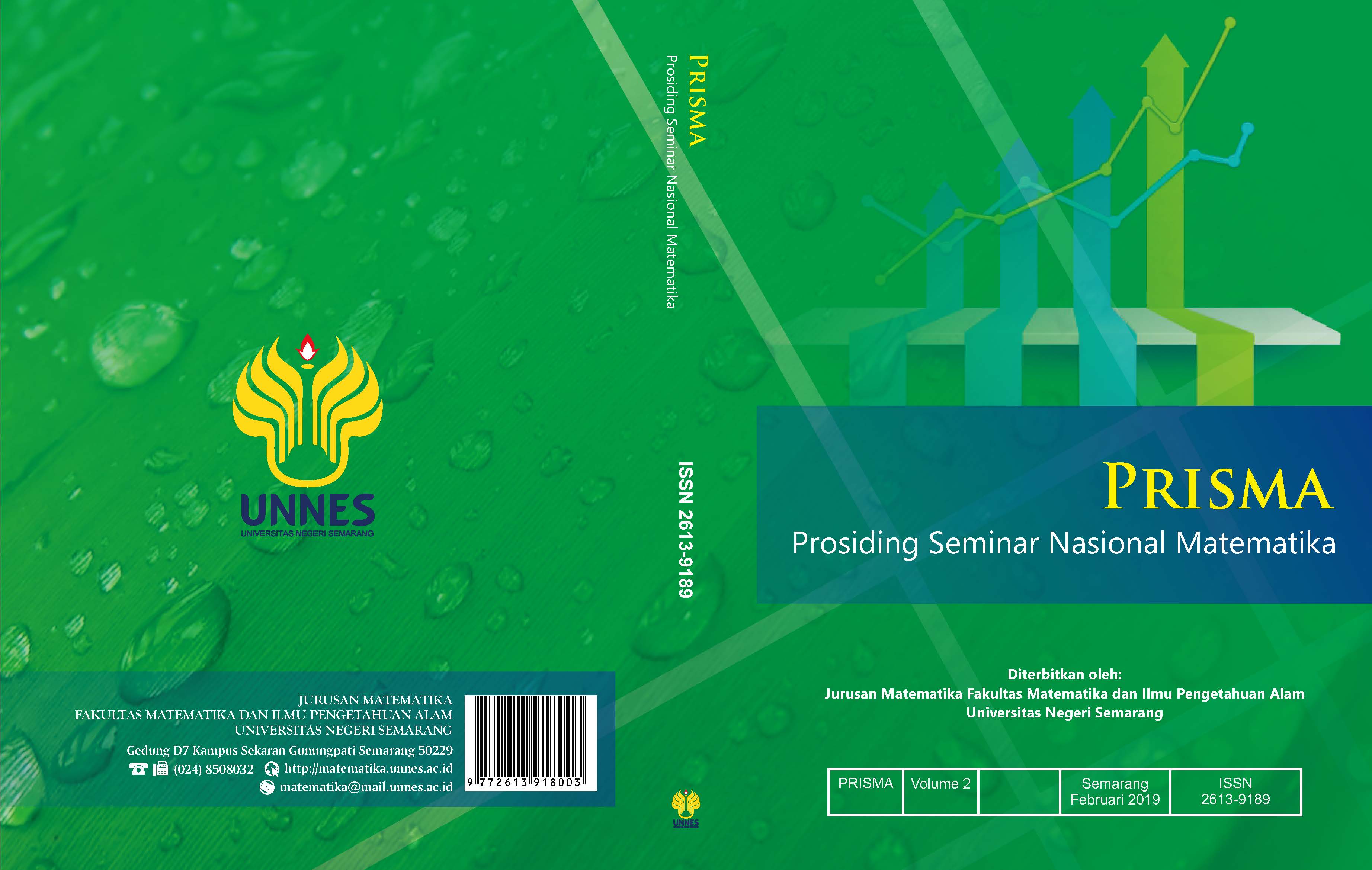Web-Based Resources dan Blended Learning Environment
Main Article Content
Abstract
Artikel ini membahas keterkaitan antara learning resources berbasis web yang dapat diakses secara mudah oleh mahasiswa. Web-based resources merupakan satu upaya civitas akademik FMIPA UNNES menyesuaikan diri dengan Peraturan Rektor UNNES Nomor 27 Tahun 2016 dan Permendikbud Nomor 109 Tahun 2013 yang secara implisit mendorong dosen untuk mengembangkan bahan ajar dalam bentuk elektronik.
Article Details
How to Cite
Zahid, M. Z., Amidi, A., & Setiawan, Y. A. (2019). Web-Based Resources dan Blended Learning Environment. PRISMA, Prosiding Seminar Nasional Matematika, 2, 928-931. Retrieved from https://journal.unnes.ac.id/sju/prisma/article/view/29311
Section
Articles
References
Anderson, D. L. (2016). Organization development: The process of leading organizational change. Sage Publications.
Crumlish, C. (1999). The Internet for busy people. McGraw-Hill Professional.
Garrison, D. R., & Kanuka, H. (2004). Blended learning: Uncovering its transformative potential in higher education. Internet and Higher Education, 7(2), 95–105. https://doi.org/10.1016/j.iheduc.2004.02.001
Garrison, D. R., & Vaughan, N. D. (2008). Blended learning in higher education: Framework, principles, and guidelines. John Wiley & Sons.
Hill, J. R., & Hannafin, M. J. (2001). Teaching and learning in digital environments: The resurgence of resource-based learning. Educational Technology Research and Development, 49(3), 37–52.
National Institute for Professional Practice. (2017). The 21st century workplace: Skills for success part two. Retrieved from https://www.professionalpractice.org/about-us/skills_for_success_2/
Osguthorpe, R., & Graham, C. (2003). 107-Blended Learning Environments. Quarterly Review of Distance Education, 4, 227–233. https://doi.org/Article
Petra, S. F., Jaidin, J. H., & Linn, J. Q. P. M. (2016). Supporting students to become autonomous learners: the role of web-based learning. The International Journal of Information and Learning Technology International Journal of Information and Learning Technology International Journal of Information and Learning Technology Iss International Journal of Information and Learning Technology, 33(3), 263–275. https://doi.org/DOI 10.1108/IJILT-12-2012-0042
Robbins, S. P., Judge, T., & others. (2012). Essentials of organizational behavior. Boston: Pearson Boston, MA.
Rosenberg, M. J. (2012). Knowledge management and learning: Perfect together. In R. J. Reiser & J. V. Dempsey (Eds.), Trends and issues in instructional design and technology (pp. 158–168). Boston, MA Pearson.
Ryder, R. J., & Graves, M. S. (1997). Internet for Educators 2nd ED. Prentice Hall PTR.
SCANS. (1999). Skills and tasks for jobs. Washington. DC.: U.S. Department of Labor.
Singh, H. (2003). Building effective blended learning programs. Educational Technology-Saddle Brook Then Englewood Cliffs NJ-, 43(6), 51–54.
Smaldino, S. E., Lowther, D. L., Russell, J. D., & Mims, C. (2008). Instructional technology and media for learning. Pearson Merrill Prentice Hall Upper Saddle River, NJ.
Wagner, E. D. (2000). Emerging technology trends in elearning. LiNEZine: Learning in the New Economy e-Magazine.
Crumlish, C. (1999). The Internet for busy people. McGraw-Hill Professional.
Garrison, D. R., & Kanuka, H. (2004). Blended learning: Uncovering its transformative potential in higher education. Internet and Higher Education, 7(2), 95–105. https://doi.org/10.1016/j.iheduc.2004.02.001
Garrison, D. R., & Vaughan, N. D. (2008). Blended learning in higher education: Framework, principles, and guidelines. John Wiley & Sons.
Hill, J. R., & Hannafin, M. J. (2001). Teaching and learning in digital environments: The resurgence of resource-based learning. Educational Technology Research and Development, 49(3), 37–52.
National Institute for Professional Practice. (2017). The 21st century workplace: Skills for success part two. Retrieved from https://www.professionalpractice.org/about-us/skills_for_success_2/
Osguthorpe, R., & Graham, C. (2003). 107-Blended Learning Environments. Quarterly Review of Distance Education, 4, 227–233. https://doi.org/Article
Petra, S. F., Jaidin, J. H., & Linn, J. Q. P. M. (2016). Supporting students to become autonomous learners: the role of web-based learning. The International Journal of Information and Learning Technology International Journal of Information and Learning Technology International Journal of Information and Learning Technology Iss International Journal of Information and Learning Technology, 33(3), 263–275. https://doi.org/DOI 10.1108/IJILT-12-2012-0042
Robbins, S. P., Judge, T., & others. (2012). Essentials of organizational behavior. Boston: Pearson Boston, MA.
Rosenberg, M. J. (2012). Knowledge management and learning: Perfect together. In R. J. Reiser & J. V. Dempsey (Eds.), Trends and issues in instructional design and technology (pp. 158–168). Boston, MA Pearson.
Ryder, R. J., & Graves, M. S. (1997). Internet for Educators 2nd ED. Prentice Hall PTR.
SCANS. (1999). Skills and tasks for jobs. Washington. DC.: U.S. Department of Labor.
Singh, H. (2003). Building effective blended learning programs. Educational Technology-Saddle Brook Then Englewood Cliffs NJ-, 43(6), 51–54.
Smaldino, S. E., Lowther, D. L., Russell, J. D., & Mims, C. (2008). Instructional technology and media for learning. Pearson Merrill Prentice Hall Upper Saddle River, NJ.
Wagner, E. D. (2000). Emerging technology trends in elearning. LiNEZine: Learning in the New Economy e-Magazine.
